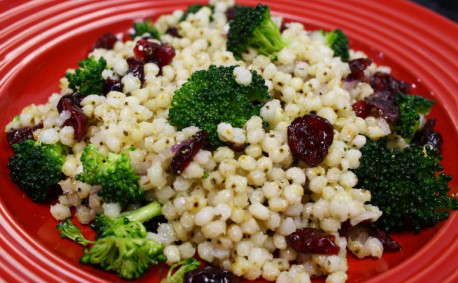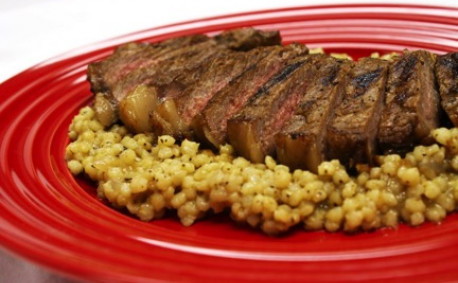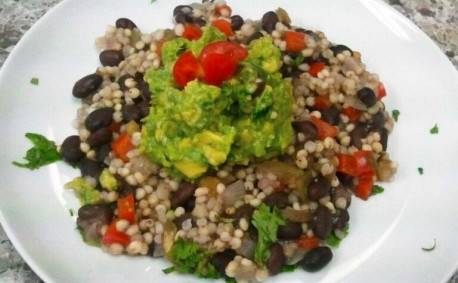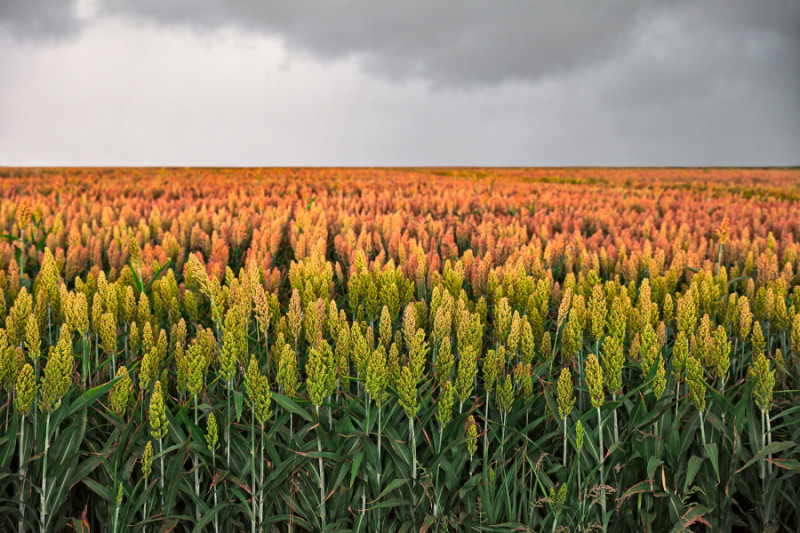Fun Facts About Sorghum
Sorghum, also called milo, is an edible, ancient grain known for its versatility. It’s primarily used for livestock feed but can also be found in consumer recipes, ethanol, packing peanuts and building material!
Despite its countless uses across different industries, many people aren’t familiar with this gluten-free grain. One important tidbit: Kansas is the No. 1 producer of grain sorghum in the U.S.! Our hot, dry summers and rich soil make Kansas an ideal growing spot.
Keep reading to discover other fun facts about sorghum. You may find a new favorite recipe, or maybe getting the scoop on sorghum will come in handy at your next trivia night!
Sorghum Fun Facts
- Sorghum comes in four main types: grain, forage, biomass and sweet. Grain and sweet sorghum can be used for cooking; forage sorghum is used for livestock feed; and biomass sorghum is used to produce renewable fuels like ethanol.
- Sweet sorghum is often used to make sorghum syrup, which is similar to molasses and can be used in place of corn syrup, honey, molasses or other liquid sweeteners in recipes. Southern cooks also serve sorghum syrup with biscuits or pancakes!
- Sorghum is planted in May or June and is harvested in September or October.
- One bushel of sorghum weighs 56 pounds.
- Only six inches of water is needed (including from the soil, rainfall and/or irrigation) to produce a bushel of grain sorghum.
- About 40% of sorghum in the U.S. is used for ethanol production.
- Sorghum is drought-resistant and can survive harsh conditions.
- One-third of grain sorghum grown in Kansas is exported to countries around the world.
- Sorghum can be popped like popcorn!
Sorghum Origins
The first known evidence of sorghum was found along the Egyptian-Sudanese border and dates to 8,000 B.C. The crop spread across Africa over time, adapting to different growing environments as it traveled.
In 1757, Ben Franklin wrote about using sorghum to create brooms. This is the first known record of sorghum in the U.S.
Sorghum Uses
Sorghum is a multipurpose grain. Over the years, the different uses for sorghum have expanded to:
- Consumer food
- Livestock feed
- Ethanol production
- Building material
- Pet food
- Brooms
- Fencing
- Packing peanuts
Where Sorghum Is Grown
The U.S. is the largest producer of sorghum in the world. The area known as the Sorghum Belt runs from South Dakota to Southern Texas. In 2022, the states that produced the most sorghum were:
- Kansas – 105,300,000 bushels
- Texas – 50,350,000 bushels
- South Dakota – 11,900,000 bushels
- Colorado – 7,600,000 bushels
- Nebraska – 6,875,000 bushels
- Oklahoma – 5,760,000 bushels
Sorghum Recipes
Although the grain has been around for centuries, it has only recently become popular in U.S. kitchens. If you’re looking for grain sorghum in the grocery store, check out the aisle with other whole grains like quinoa and bulgur.
Sorghum has a nutty flavor and is filled with healthy nutrients such as protein, potassium and vitamin B6. It’s a great replacement for wheat in gluten-free diets and can be used to make bread and other baked goods.
Try cooking with sorghum today! Check out these recipes:
Now that you have an arsenal of fun sorghum facts and delicious recipes at your disposal, you can impress all your friends and family at your next dinner party. The next time you spot it in the grain aisle of the grocery store or drive by a beautiful golden-red sorghum field, you’ll be able to appreciate this fascinating, diverse grain even more!












